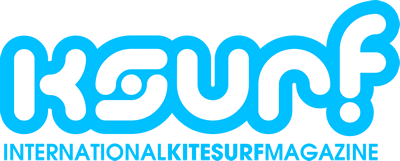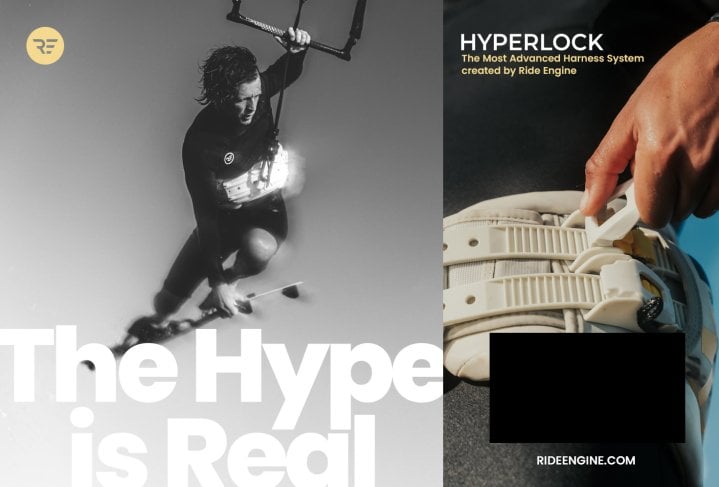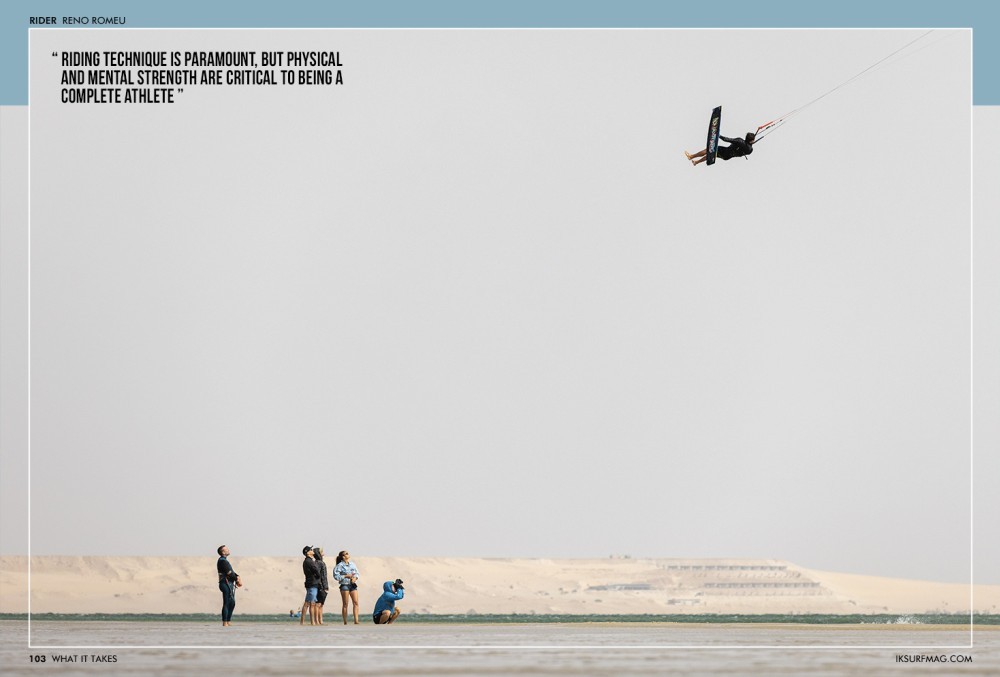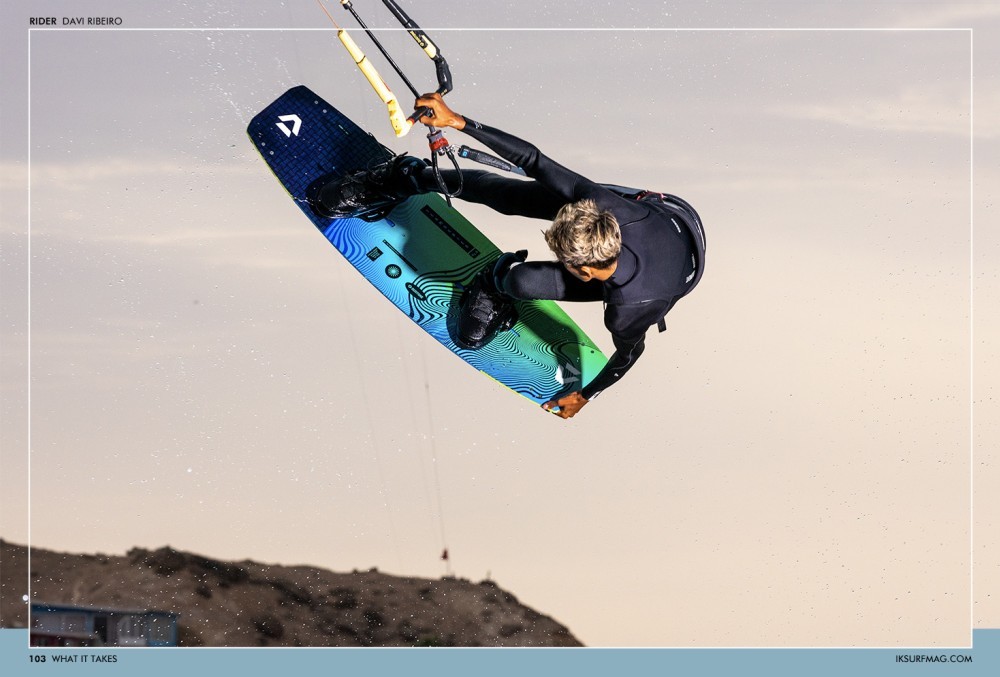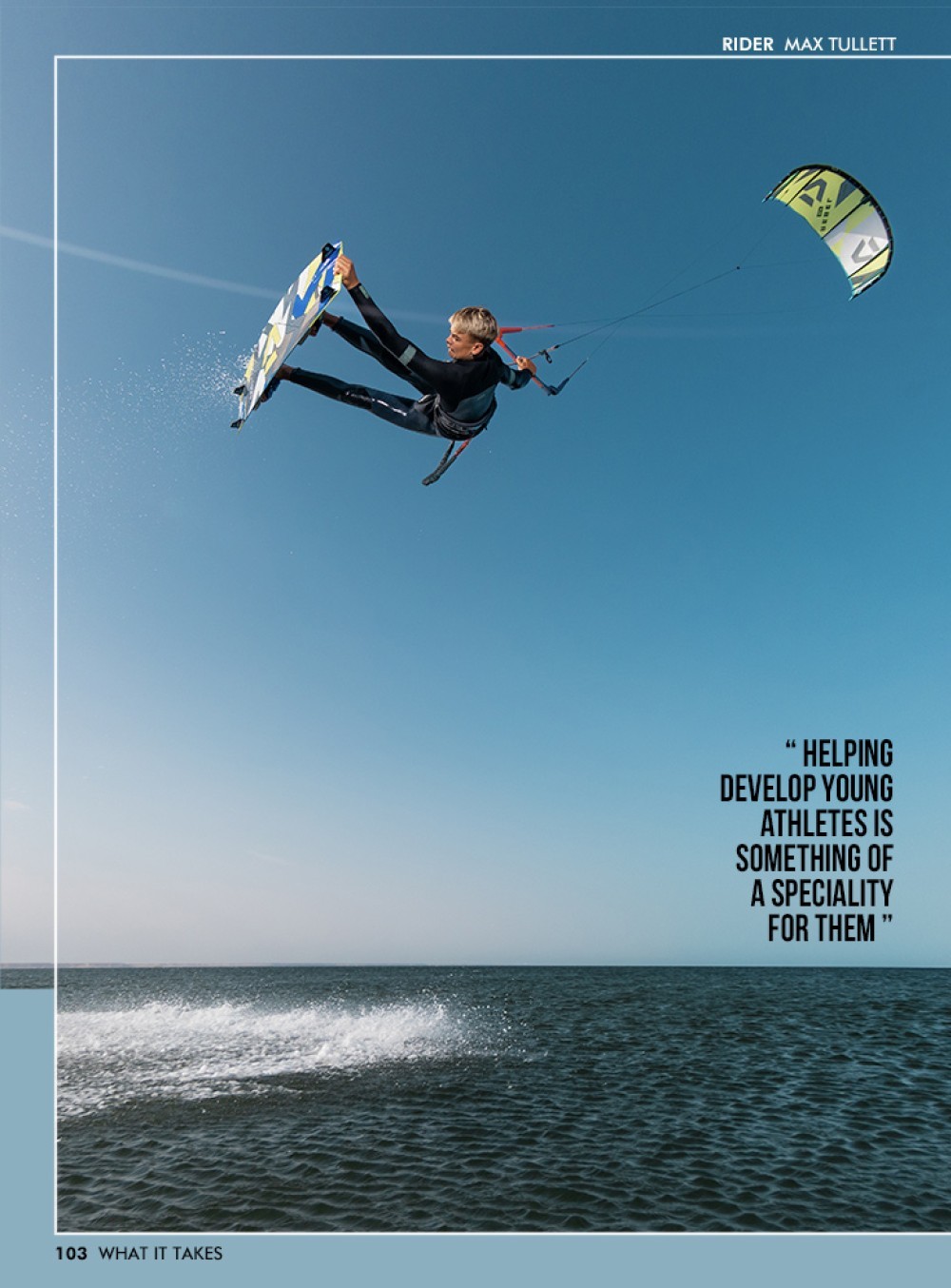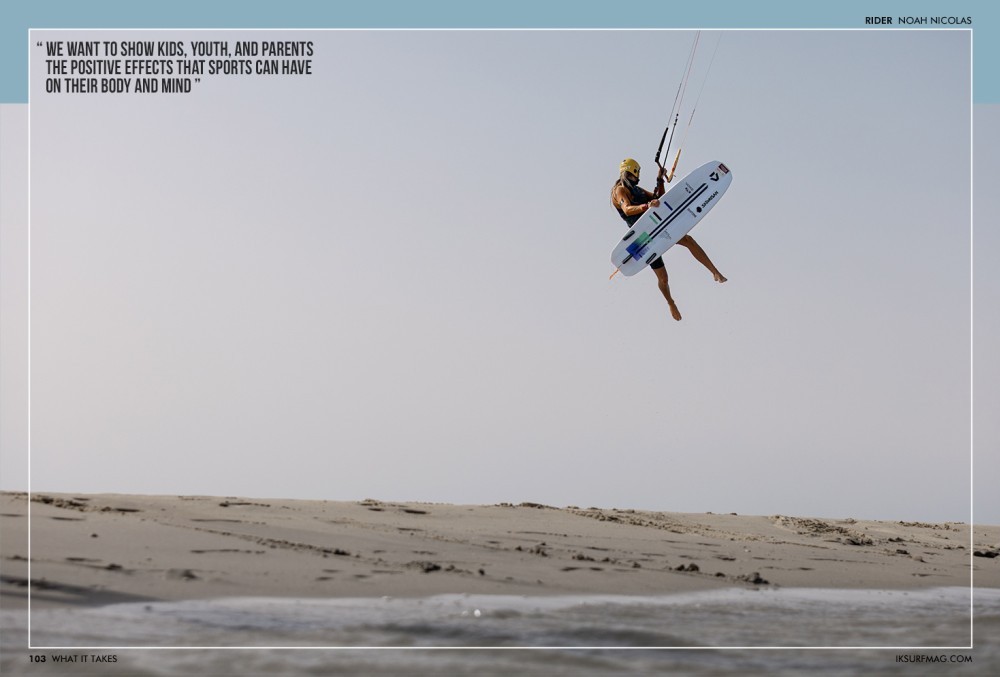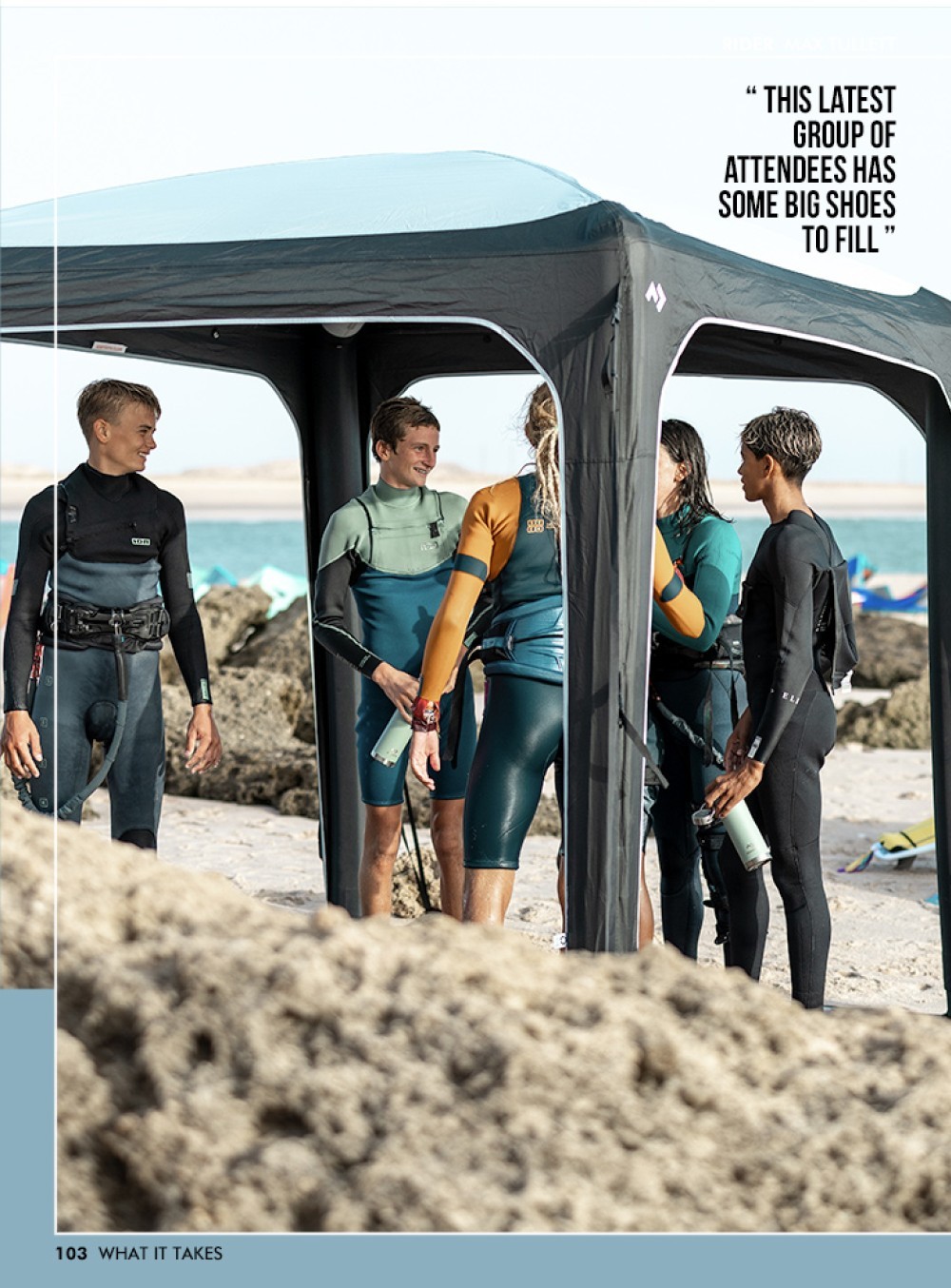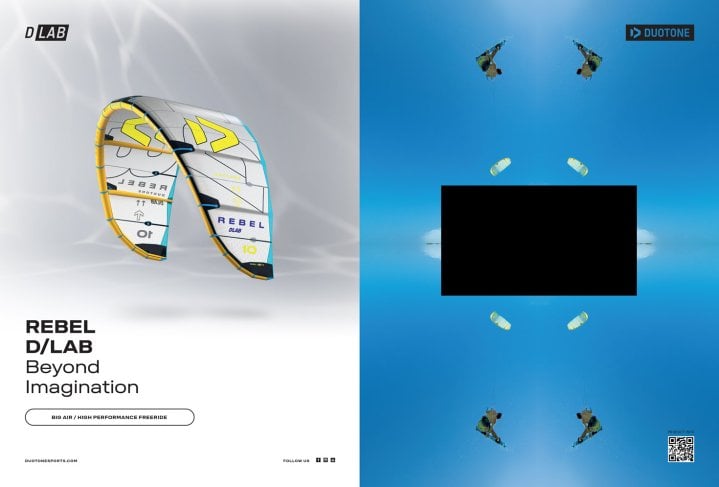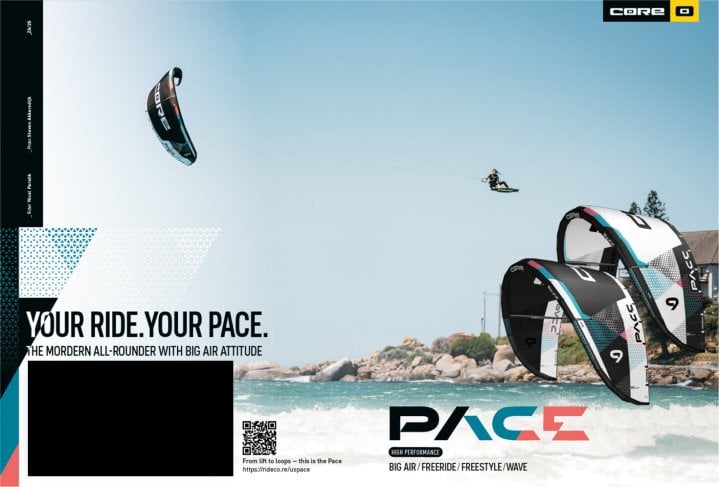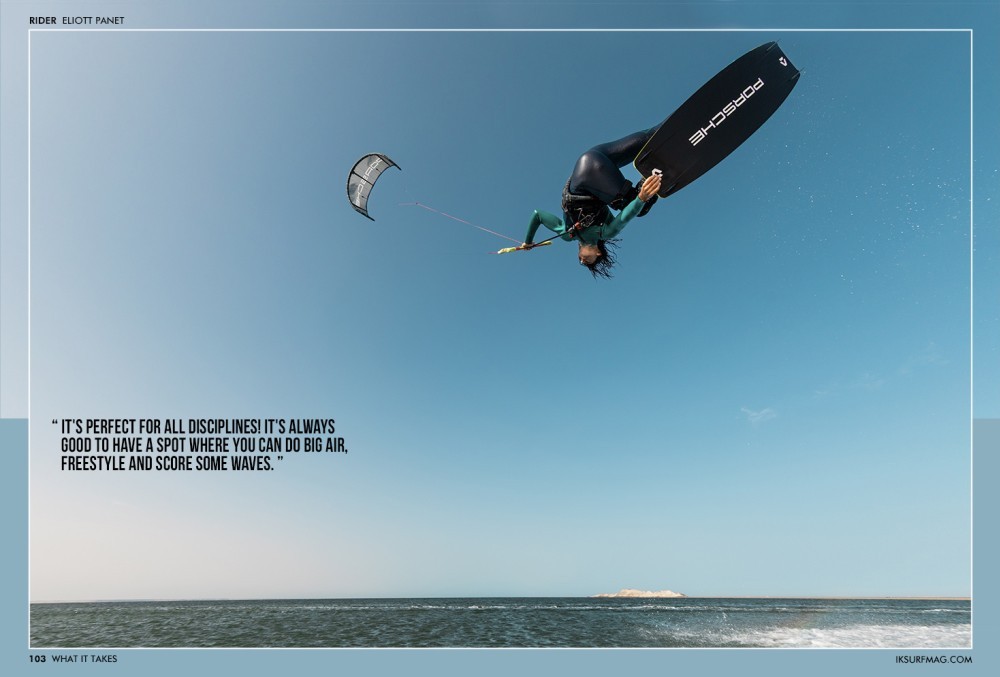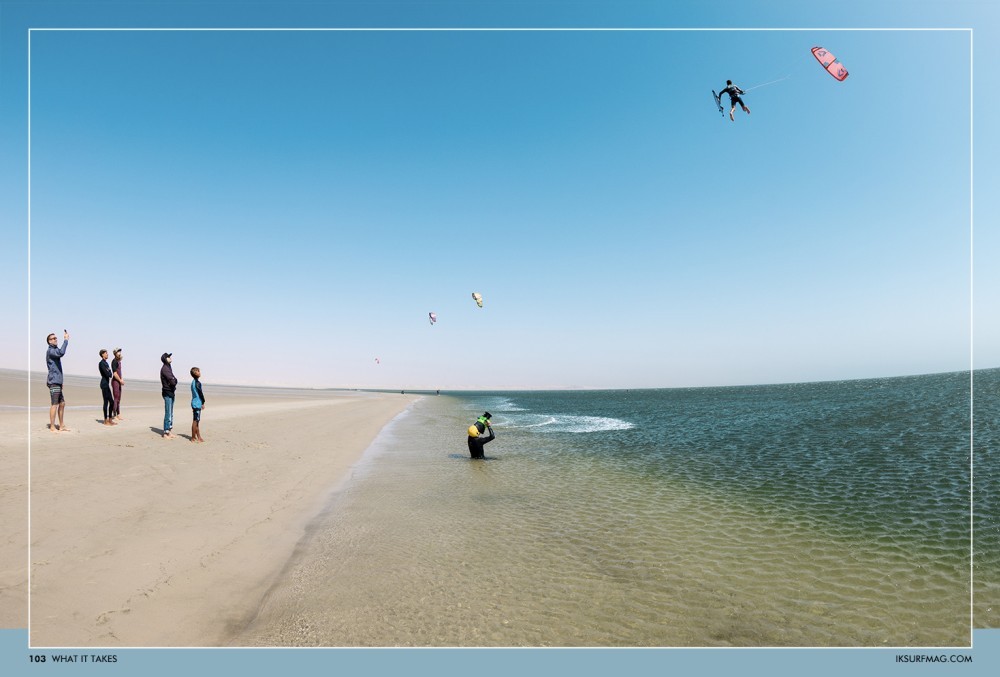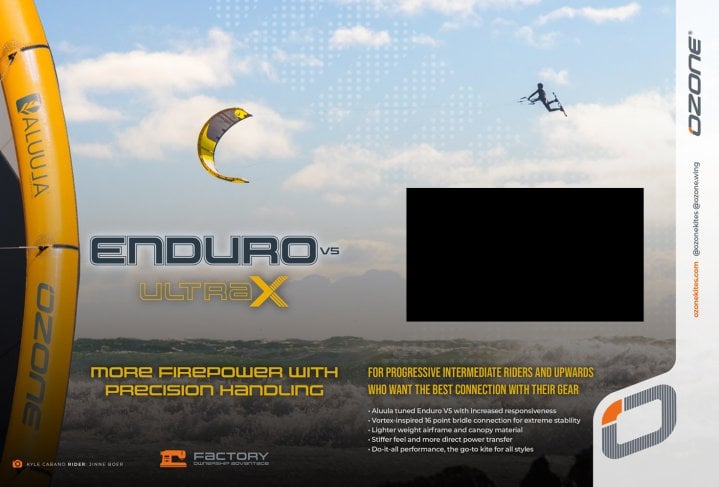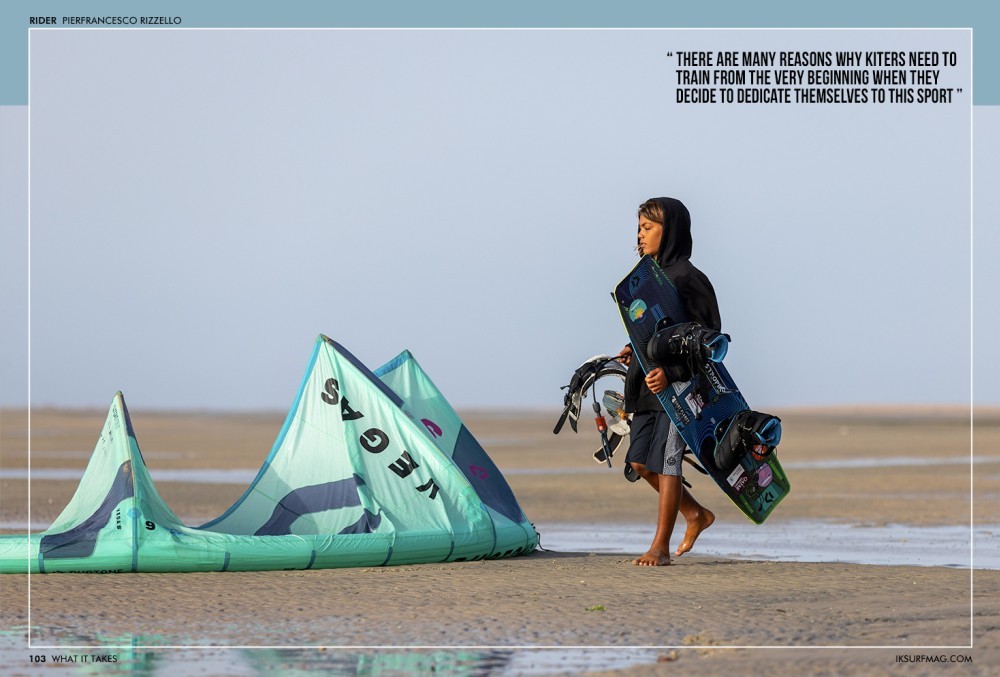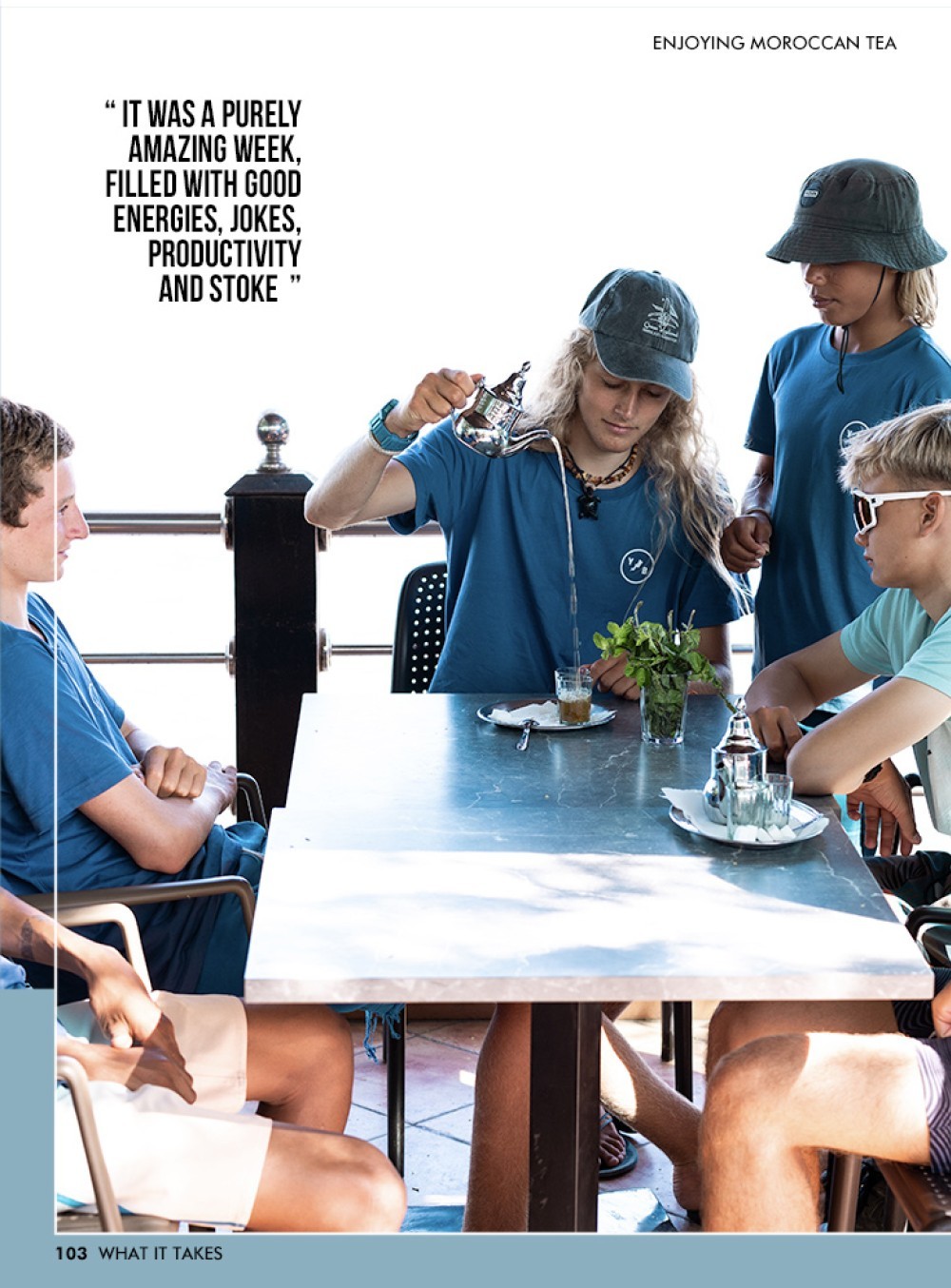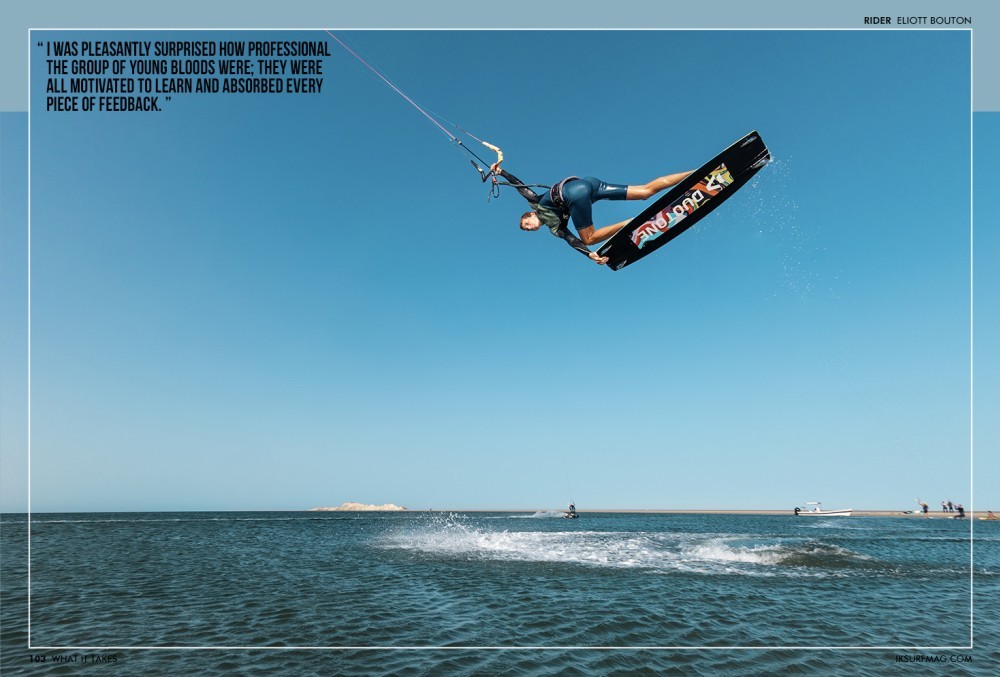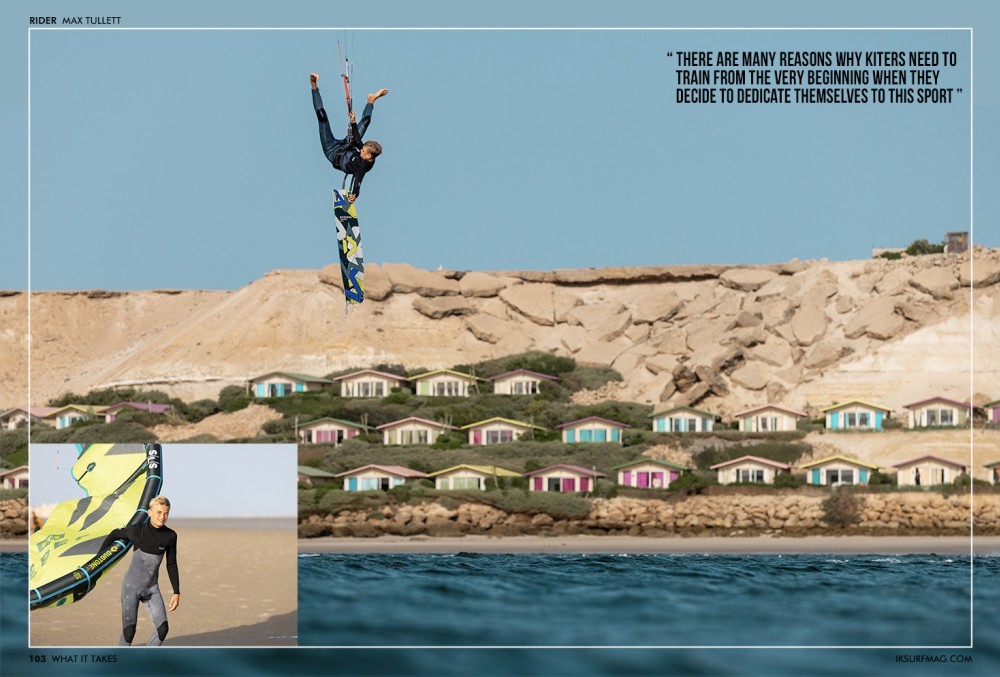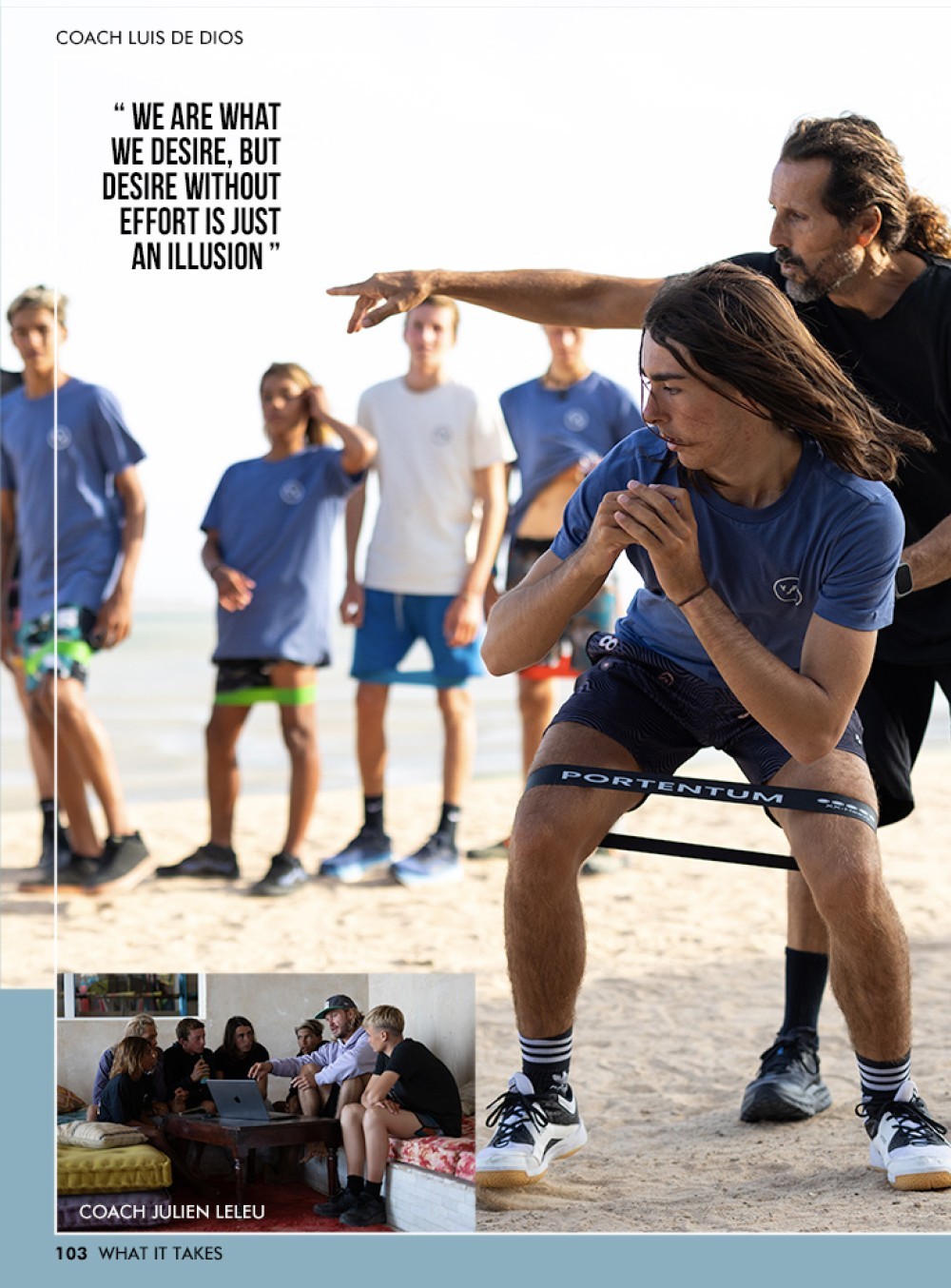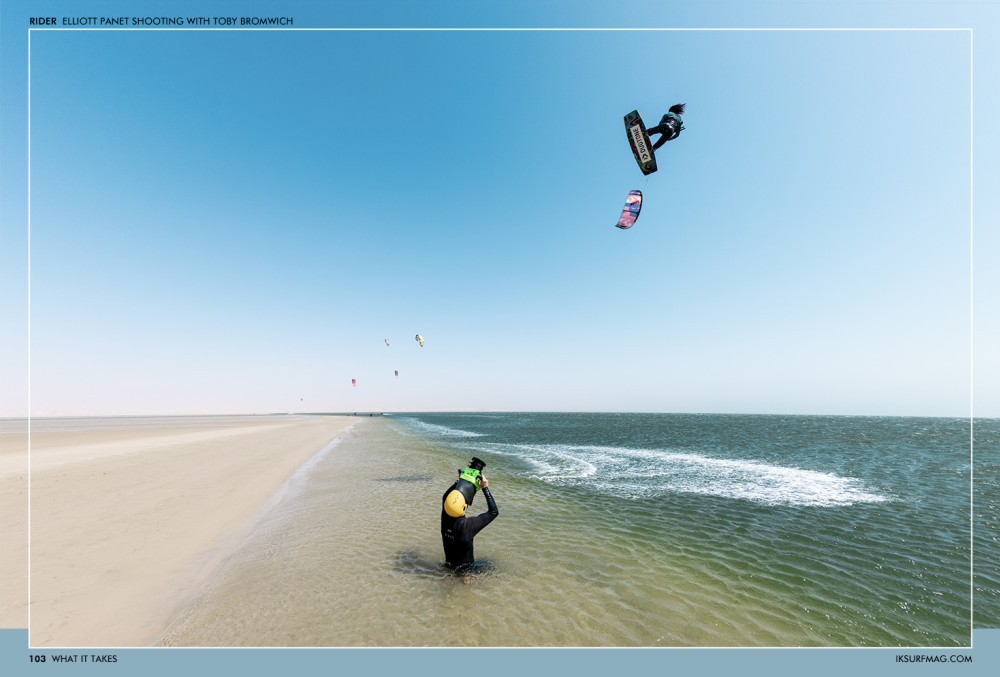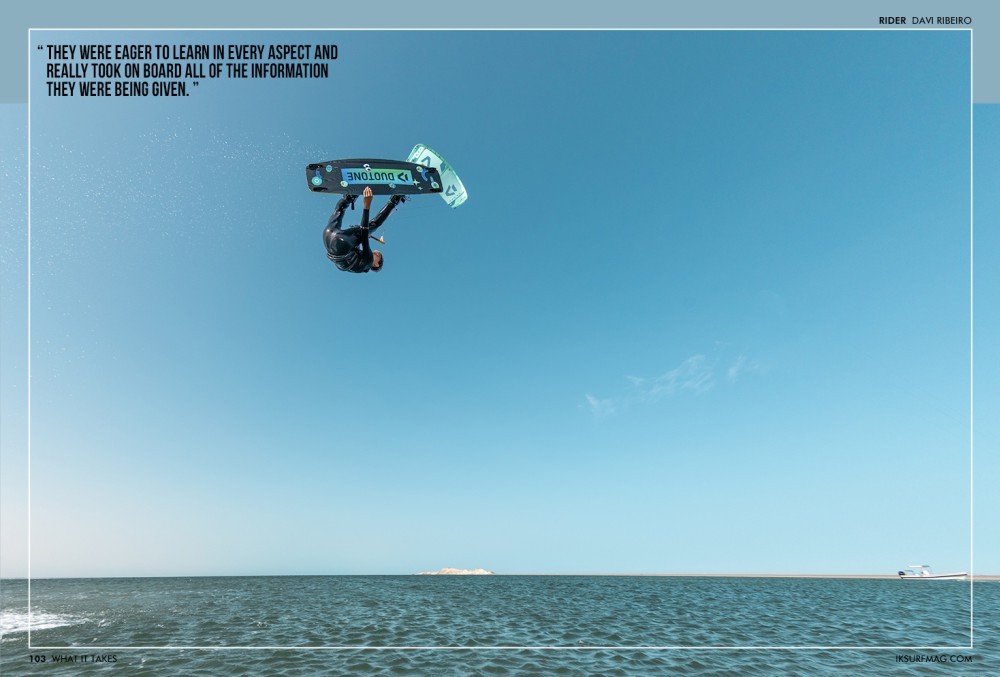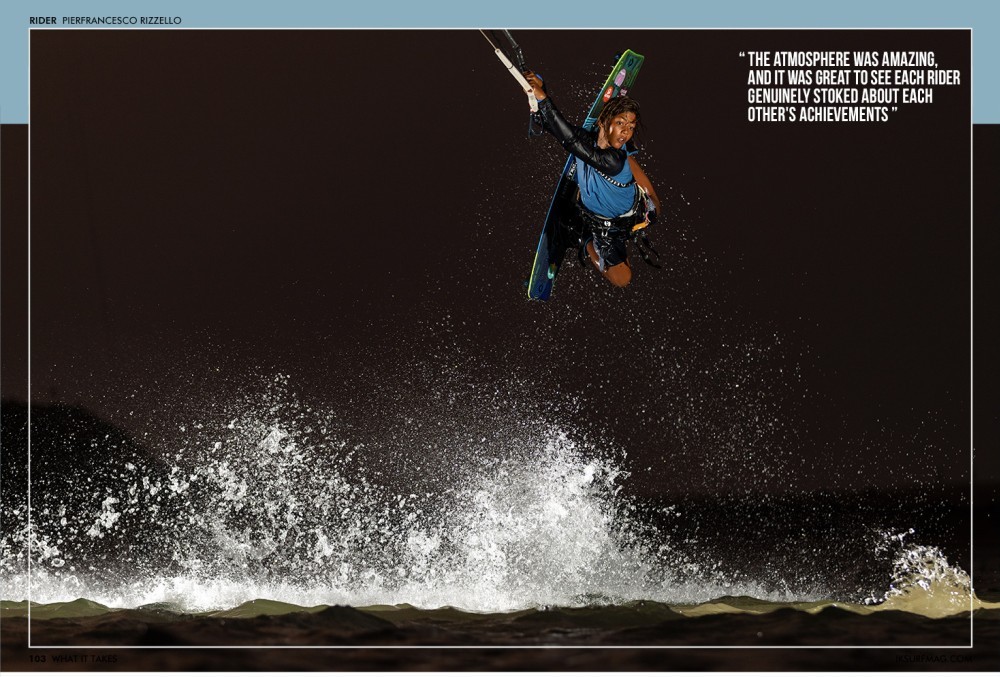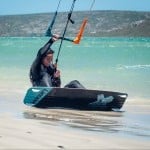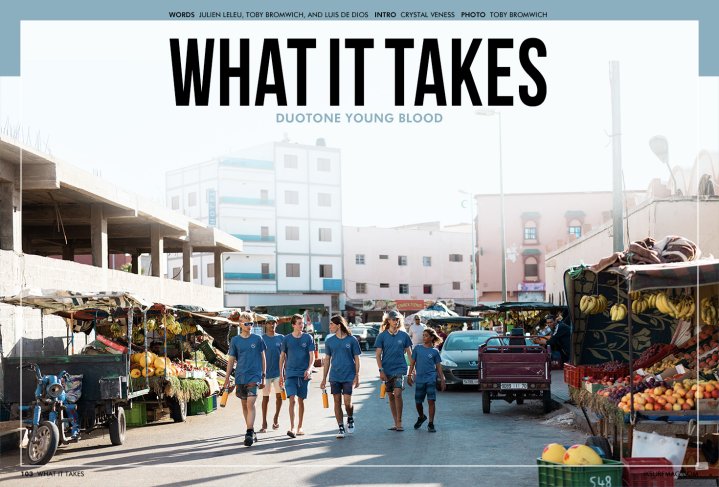
What It Takes
Issue 103 / Mon 19th Feb, 2024
Take a behind-the-scenes look at the latest Duotone Young Blood camp in Dakhla, where the next generation of kiteboarding talent came together to learn what it takes to be a young professional kiteboarder. Guided by industry veterans and a strong team of coaches, these young riders had the opportunity to learn from the best of the best in photography, videography, and athletic performance. Read all about the camp in this exclusive article!
Being a professional kiteboarder is, first and foremost, about being the best. It's about standing on that top step of the podium, lifting that trophy, and celebrating that moment of glory, hard-earned through years of training to assemble the biggest bag of tricks which can be unpacked, one by one, on the day it matters most.
That's not all it's about, though. Thanks to the reach of social media, we can follow the journeys of today's top kiters and see that being the strongest rider on the water takes a lot more than just kiting a lot. The riders reaching the highest level today do so by building themselves up across multiple pillars. We can see what they're investing into achieving success by following along on social media as they profile their adventures at the gym, ice water baths, meditations, healthy diets, and all the supplementary steps they take to reach their peak performance.
Riding technique is paramount, but physical and mental strength are critical to being a complete athlete. Media savvy, while not necessarily the key to getting onto those podiums, is just as crucial in helping a rider catch the attention of sponsors, gain their support, and, if done well, earn a decent income. With so much talent coming up, the ability to perform on digital and traditional media can be that silver bullet in securing a great sponsor. Living the life of a sponsored pro kiter means participating in product shoots, travelling to competitions, and having support from a strong team on the beach, whether training or competing. A lone wolf can make it happen, of course, but the road will be challenging physically, mentally, and financially.
Having brands as powerful as Duotone and ION behind you can be the secret ingredient needed to catapult you to the very top! Helping develop young athletes is something of a speciality for them, from the first Young Blood camp in 2006, which launched the careers of Airton Cozzolino and Renu Romeu, to the 2022 resurrection featuring Andrea Principi, Lorenzo Casati, Edgar Ulrich, and Beto Gomez, to all of those years between where they have stood behind many of the world's best riders.
Philipp Becker, International Marketing Manager at Duotone, explains the purpose of the program, saying, "On the one hand, we want to show kids, youth, and parents the positive effects that sports can have on their body and mind, like feeling healthy, gaining confidence, and increasing mental strength and focus. On the other hand, we also want to get the importance of professionalism across to the Young Bloods. Good riding is essential for a pro rider, but it is not everything. Lastly, we, of course, are looking for new talents to support."
This year, DUOTONE has picked some of the strongest up-and-coming riders from around the world, with the UK's Max Tullett and Brazil's Davi Ribeiro returning for the second year in a row. They were joined by Pierfrancesco Rizzello from Brazil and Noah Nicolas, Eliott Bouton, and Eliott Panet, all from France.
The professional team consisted of original Young Blood Reno Romeu, still a valued member of the global athletic team, Philipp Becker and Marc Kevin Scholz from the marketing team and Craig Cunningham, Team Manager. Luis de Dios, who was also present at the first camp in 2006 and the 2022 edition, returned as the athletic coach. Toby Bromwich, a photographer specialising in kiteboarding, has been in the industry since 2005 and took each picture featured in this article, and many more that you have seen in previous issues of this magazine. Also behind the camera was Julien Leleu, a former professional kiter who has built a successful reputation for video production and who, along with Carlos Guzmán Ortega, created the after-movie that showcased this year's journey.
With so many successful graduates of the previous Young Blood program, this latest group of attendees has some big shoes to fill, but with so much talent and experience behind the scenes, they had all the tools necessary to make it happen! Keep reading to hear from three of the coaches who were key to making this Young Blood camp a success!
ON DAKHLA, MOROCCO
Julien Leleu: I was very excited about the location choice for this Young Blood camp because I have known Dakhla for many years, and I'm used to shooting around here. I know the variety of conditions that Dakhla provides, and it's perfect for all disciplines! It's always good to have a spot where you can do big air, freestyle and score some waves. Also, the set-up of the hotels makes this kind of shoot easier as you basically sleep on the spot, and it makes all of the logistics easier.
Morocco offered a perfect blend of stunning visuals and rich cultural experiences. The sights, sounds, and diverse landscapes of Morocco provided us with incredible backdrops to showcase the talents and personalities of the young riders. It was a vibrant and unique location that added depth and authenticity to the video.
We did a lot of exploring to capture all the "b-roll" shots and off-water activities. We wanted to showcase not only the kiteboarding action but also the experiences the kids had outside of the water. One interesting story from the off-water activities was when we visited a local village and had the opportunity to interact with the local community. The kids showed genuine curiosity and respect for the culture, and it was amazing to witness those interactions and capture those moments on camera.
ON BEING AN ATHLETE
Luis de Dios: From my point of view, every athlete needs a solid physical foundation for sports performance and injury prevention. This foundation includes strength, endurance, flexibility, balance, and coordination, among other aspects that progressively add up. This enhances sports performance and helps prevent injuries by providing stability and support to the body. Without it, we condemn the body to physically limit us over time and expose ourselves to errors that can cause injury.
In kitesurfing, athletes are constantly pushing the limits and facing variable conditions. There are many reasons why kiters need to train from the very beginning when they decide to dedicate themselves to this sport. You need body control to avoid falls; you need a strengthened body capable of absorbing impacts. As mentioned before, a trained body is less susceptible to injuries. It helps us maintain endurance during long water sessions. Finally, training gives us confidence and security to face challenges and make the sport rewarding overall. Adult athletes must focus even more on specific demands and balance training with routines adapted to each individual.
ON THE PROGRAM
Julien Leleu: Our program for the week focused on helping the kids improve their on-camera performance. We shared various techniques, such as framing, angles, and transitions, specifically tailored for video filming. We also emphasised the importance of expressing their personality and emotions effectively through the lens. Through practice and guidance, we helped them develop their unique styles and ensured that their performances on camera were authentic and captivating.
It was a purely amazing week, filled with good energies, jokes, productivity and stoke - and you can feel that in the final video for sure! I feel they were super receptive to all the tips and advice we shared with them. It was brilliant to see the kids so grateful for the opportunity that Duotone and the sponsors gave them.
Toby Bromwich: Before going out for a session, we have a sit-down where I bring up some images from previous shoots, some good shots and some shots that perhaps didn't work, and I explain what I was trying to achieve with that rider at that particular time. The most common mistake is a rider wanting to do their most difficult tricks and maybe not understanding the positioning. I'll be trying to line up for a shot, so we discuss how the riders need to communicate with whoever is shooting them to be able to maximise the outcome. I talk through the various equipment I will be using, for example, different focal lengths of lenses and what kind of distances and positions they should be in. I also ask them to bear in mind how the image may look from my perspective and again show them examples of that on the computer.
On the photo shoots, I have to say they did incredibly well at taking all of the theory on board and putting it into practice. I would give positive feedback when they got a great shot and advice for any that needed to adjust a little bit to line up a shot better, but overall, I have to say they picked it up almost straight away. I was pleasantly surprised how professional the group of Young Bloods were; they were all motivated to learn and absorbed every piece of feedback. They were such a great group of young riders who will be amazing ambassadors for the sport in the future. The atmosphere was amazing at the camp, and it was a pleasure to work with them all.
Luis de Dios: My main goal at the camp was to raise awareness among young kiters about the importance of physical work to strengthen ligaments and tendons with routines that address these areas. We performed exercises to strengthen ligaments and the musculature required for kiteboarding. We included some balance and stability routines and low-impact strength training, which minimises stress on the joints as they are subjected to a lot of stress after hours of sailing. Finally, we incorporated adequate rest and recovery. With Young Blood, we aim to educate young athletes about the long-term benefits of taking care of their bodies to improve performance and reduce injuries.
To motivate the boys physically, structured training programs adapted to their ages and skill levels need to be offered to them. I hope that group training sessions, friendly competition among them, mental coaching sessions along with role models that Duotone involves by bringing adult professionals to the camp, and the constructive feedback that has been given to them daily can create in the boys the necessary stimulus to start a healthy life where training and life are in harmony. I just want to say that my help is always available for anyone willing to fight and strive for their goals.
ON PROGRESSION
Luis de Dios: There are always changes as the camp proceeds. In terms of physical changes, they are not very remarkable in a short time, but I observed a transformation in attitude and motivation. This is the beginning of a change in the athlete; without a determined attitude and going for it, it is difficult for a coach to achieve gradual changes in a kiter's trajectory. We are what we desire, but desire without effort is just an illusion; you have to work hard every day on it. Motivation is the beginning. On observable improvements, I can say that the boys have developed technical improvements, greater self-confidence, better understanding of strategies and tactics, development of communication skills, and better stress management.
Toby Bromwich: Max and Davi were already riding really well at the last camp in Egypt, and this season, you just saw their repertoire grow even further. It was nice to have a solid week of wind and a variety of strong winds for big air and then some days more suitable for freestyle. It was also great to see them stepping outside their comfort zones, with Davi embracing some big air riding when conditions were strong and Max working on some lower freestyle moves in the lighter wind conditions. Often on photo shoots you can't guarantee a forecast so being adaptable is important.
From the overall progression side, I think the group picked things up very quickly, and watching all of the other activities on the camps such as the physical training, social media and video side, the attitude was the same from all of them. They were eager to learn in every aspect and really took on board all of the information they were being given.
FINAL THOUGHTS
Julien Leleu: I loved seeing how the Young Bloods became a real team during the week, kept contact, and continued supporting each other post-camp, too. They are the new generation, and it's amazing to be able to bring them together in the early stages of their careers so they can build a special relationship and create a positive momentum to progress in all aspects.
Luis de Dios: I would like the kiters who have spent this time with us to have a new vision of how to achieve performance at all levels. A professional kiter must know all the tools available to achieve success. In my opinion, Young Blood is an opportunity to discover those tools and where to start developing them. You cannot do what you don't know, but not doing what you know is even worse. I hope this is a door to the motivation to do things in the best possible way.
Toby Bromwich: My most memorable takeaway from the camp was the great vibe and attitude all of the riders brought. The atmosphere was amazing, and it was great to see each rider genuinely stoked about each other's achievements; you could feel the sense of each rider building up and encouraging another rider. After a week with the next generation, I came away feeling the future of kiteboarding is in good hands with this new generation of young talent.
Videos
By Crystal Veness
Editor at IKSURFMAG, Crystal Veness hails from Canada but is based in South Africa. When she isn't busy kitesurfing or reporting on the latest industry news for the mag, she is kicking back somewhere at a windy kite beach or working on creative media projects.
